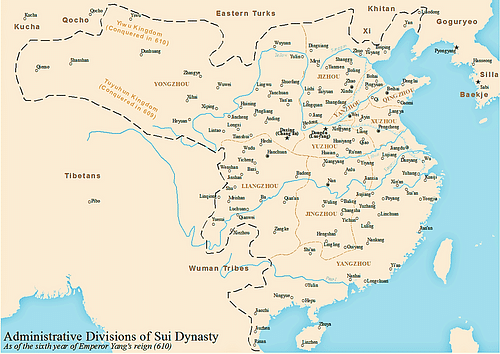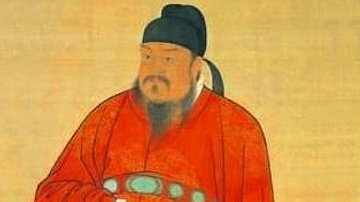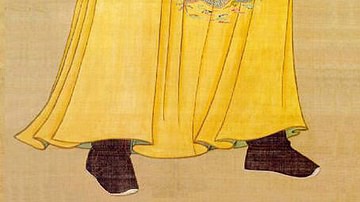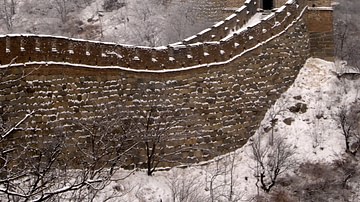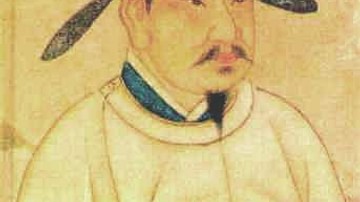
The Sui Dynasty (581-618 CE) was a brief one with only two reigning emperors but it managed to unify China following the split of the Northern and Southern Dynasties period. As had happened previously in Chinese history, a short-lived dynasty made important structural changes which paved the way for a more long-lasting successor, where culture and the arts flourished, in this case, the Tang Dynasty. Reforms in government, the civil service administration, laws and land distribution helped restore and centralise imperial authority. At the same time, the regime became infamous for its immorality, huge public spending projects, and military follies, which combined to bring rebellion and, ultimately, its overthrow.
The Unification of China
In the late 6th century CE China was still beset with warring states who incessantly vied with each other for greater wealth and power. The three centuries of disunity would finally come to an end in 581 CE when one commander, known then as Yang Jian (aka Yang Chien), seized government from his military base in Guanzhong and unified the north. Not just a talented general, Jian was well-connected, and when his daughter married the heir of the Northern Zhou dynasty, he was given an imperial connection. The heir had died in 580 CE which allowed Jian to declare himself regent. To ensure no revival or rebellion would knock him off his newly acquired throne, Jian had 59 members of the royal Zhou family murdered and then set his sights on the south in 588 CE.
Giving his new state the name of Sui, after his father's fiefdom, Jian amassed an army of over half a million and a huge fleet which included five-decked ships capable of carrying 800 men. Sailing down the Yangtze River, he swept all before him and captured Nanjing within three months. By 589 CE the south had fallen. China was a single state once again, with its capital at Chang'an, and Jian, who would become known as Emperor Wendi, established a short-lived but important dynasty in the development and history of China.
Sui Achievements
The Sui Dynasty consisted, then, of only two emperors: Wendi (aka Wen or Wen-ti), who reigned 581-601 CE, and his son Yangdi (aka Yang Guang or Yang-ti) who reigned from 604 to 618 CE. Aided by such figures as the great military commander Yang Su, the emperors consolidated their control over a unified China and expanded their territory. They also improved and centralised the administration system, established a single, unified, and less complex law code, and introduced land reforms. The old Nine Rank System of officials was abolished and, instead, local prefects were selected on merit which was demonstrated in their performance in civil service examinations held in the capital. Officials were then sent to provinces different from their birth to reduce local corruption and abuse of personal connections. For the same reason, their term of office was limited to three or four years. All religions were tolerated and supported with imperial handouts so that another potential source of division was minimised. Just as the Qin Dynasty had prepared China for the more durable and successful Han Dynasty, the Sui were paving the way for another golden age of Chinese history in the form of the Tang Dynasty.
An example of the important Sui land reforms was the extension of the Equal Field System (Jun tian) which had been first introduced in the late 5th century CE by Emperor Xiaowen of the Wei. Emperor Wendi applied the system to all of China in 582 CE. Designed to ensure small farmers did not get swallowed up by large estate owners, the government allocated a plot of land which could be worked during the farmer's working lifetime (up to 59 years of age). When he retired or died the majority reverted back to the state, and a small part could be inherited by his offspring. In another measure to help poorer farmers, extra granaries were built and filled (with tax in kind) which were reserved for destitute farmers in times of natural disaster or poor harvests.
In practice, unfortunately, much of the state's good intention towards lowly farmers was lost thanks to corrupt local officials who were bribed by larger landowners to falsify records and claims. Still, the concept was established that all such land, in effect, belonged to the emperor, and the Equal Field System was more successfully applied to new territory acquired by conquest which the Chinese aristocracy had no prior claim to.
Rather less useful to the ordinary populace was the Sui's big spending on their own palaces and other public building projects in the major cities of Chang'an, Luoyang, and Yangzhou. It did not help matters that Wen maintained three capital cities: Luoyang, Daxing, and Jiangdu, or that he kept a harem of thousands within the pornographic-covered walls of his Maze Pavilion pleasure palace.
One of the costliest projects was the construction of a massive canal to join the Yangtze and Yellow Rivers, the so-called Grand Canal. Built by conscripted labour, it was certainly grand at 40 metres (130 ft) wide and with a road running along its length. The project would eventually see three canals built, and although there was much hardship amongst the labourers tasked with building them, they did help to further connect northern and southern China. The canals proved a vital method for transporting troops and the grain tax from the south to north, where there was much less grain. Critics would later say the immoral Yangdi only wanted the canals so that he could travel around China at ease on his barges pulled by hundreds of beautiful young women, but the Tang emperors, for one, would be eternally grateful for the project. The road network was also improved and extended by Yangdi, another step forward in creating a unified China.
Military Campaigns
Sui China was not without its threats from neighbouring states, and the Great Wall was a notable point of defence against the Eastern Turks (Tujue) and so was extended and reinforced. The Sui were nothing if not ambitious, though, and they were not merely interested in protecting their borders but also dramatically expanding them. Things went well in the south with Sui armies conquering territory from the Annam and the Champa in southern Vietnam. There, in the early years of the 7th century CE, they successfully dealt with armies fielding war elephants by putting their crossbows to good use, terrifying the elephants which then stampeded back on their own lines. The elephants may not have accounted for many Chinese lives, but malaria certainly did, as most of the army was from the northern provinces of China and it was their first and fatal encounter with tropical diseases.
A Sui expedition met with even greater disaster in 598 CE when it attacked the kingdom of Goguryeo (Koguryo) in Korea and northern Manchuria. Goguryeo, perhaps sensing China's ambitions, had already made sorties into Sui territory but now it faced a massive invasion force. As it happened, the Chinese ran out of supplies, hit heavy rains, and had to return home. A second invasion was launched in 611 CE, this time by sea but was destroyed in a storm. Going for third time lucky, the Sui attacked again in 612 CE, this time with Yangdi leading the army in person. The great Korean general Ulchi Mundok was up to the task, though, and masterminded a resounding victory at the Battle of Salsu River. According to legend, of the 300,000-strong Sui army, only 2,700 ever returned to China. Two more attacks were rebuffed in 613 and 614 CE. Finally, Goguryeo had had enough and built a 480 km (300 miles) long defensive wall in 628 CE so as to deter any further Chinese ambitions. The lack of victories in Korea could be blamed on no one else but the commander who had led them, the emperor himself. Yangdi's prestige and reputation were dealt a fatal blow.
Overthrow
The defeat to Goguryeo and the hardships endured by the Chinese peasantry led to widespread rebellion in 613 CE, which was only fuelled by more military losses, this time to the Eastern Turks. The rebellions rumbled on until 617 CE. When Yangdi was assassinated by the son of one of his own generals, the Sui dynasty fell and the government was taken over by one Li Yuan, later to be known as Gaozu and founder of the Tang Dynasty. Emperor Yangdi, meanwhile, became the subject of critical Chinese historians who probably exaggerated his immoral rule as one of absolute tyranny and corruption. The last emperor had to be bad in order to justify the loss of his Mandate of Heaven.
Yangdi's father fared rather better in the historical record, largely thanks to his early support for Confucian and Taoist scholars, and his patronage of Buddhist temples which led to him becoming known as the “Cultured Emperor”. The difference in the two Sui emperors' lasting reputation is rather indicative of the period itself which is praised for its contribution towards unifying and modernising China but at the same time pilloried for its excessive waste and neglect of the welfare of the Chinese people.
